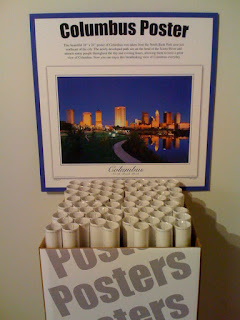
As a small business owner, you have a meaningful understanding of the color of money but how about the color of your business? Learn whether the colors of your business puts your customers in a buying mood or creates the wrong perception of your company. As for other such aspects, if you were to read this Managing The Customer Trust Crisis: New Research Insights Salesforce Blog, you’d know much more important and much-less trivial things to worry about.
The Science of Colors
The power of colors stimulates our nervous system and evokes emotional states. The colors of our environment travells through our eyes to our brain causing various hormonal releases. But forget the science, what does the meaning of colors do for your business?
The Meaning of Colors and Your Business
The meaning of colors varies depending on one’s culture, race, gender, and even age. So, it isn’t just the selection of colors in general but also which colors to use with your target customers. For instance, white is often associated with weddings in North America and evokes the feeling of innocence. In Eastern cultures, white signifies death. An exporter of white wedding gowns to China would go broke in no time.
Colors can be combined to signify meaning to a culture. In the western world, green and red are associated with Christmas, while black and orange represent Halloween.
Several large brand name companies are associated with their corporate colors. IBM- Big Blue signifies stability and conservatism. UPS- Brown symbolizes longevity and reliability. A color can be connected to a product like Tide; in the bold orange box, evoking the feeling of vibrance.
Consider the meaning of the following colors on your business marketing (in North American culture):
White: Pure. Clean. Youthful. It’s a neutral color that can imply purity in fashion and sterilization in the medical profession.
Black: Power. Elegant. Secretive. The color black can target your high-end market or be used in youth marketing to add mystery to your image.
Red: Passion. Excitement. Danger. Red is the color of attention, causing the blood pressure and heart rate to rise. Use red to inject excitement into your brand.
Orange: Vibrant. Energy. Play. Add some fun to your company if you want to create a playful environment for your customers.
Yellow: Happy. Warm. Alert. Yellow can be an attractor for your business with a relaxed feeling.
Green: Natural. Healthy. Plentiful. To create a calming effect or growth image choose green. Go green go.
Purple: Royalty. Wise. Celebration. Maybe add some purple tones to your look for your premium service business.
Blue: Loyal. Peaceful. Trustworthy. Blue is the most popular and neutral color on a global scale. A safe choice for a business building customer loyalty.
Consider how these colors are used in your company marketing materials from logos and brochures to business cards and uniforms. Are your colors projecting the personality and image you want? If not, it could be time for a color makeover.
In the end, remember colors have meaning. A white flag means surrender, however, if you have never seen a war the color is insignificant. It all depends on the experiences of the observer. Consider your colors and customers to best choose your winning color for your small business.
So, what color is your business?










